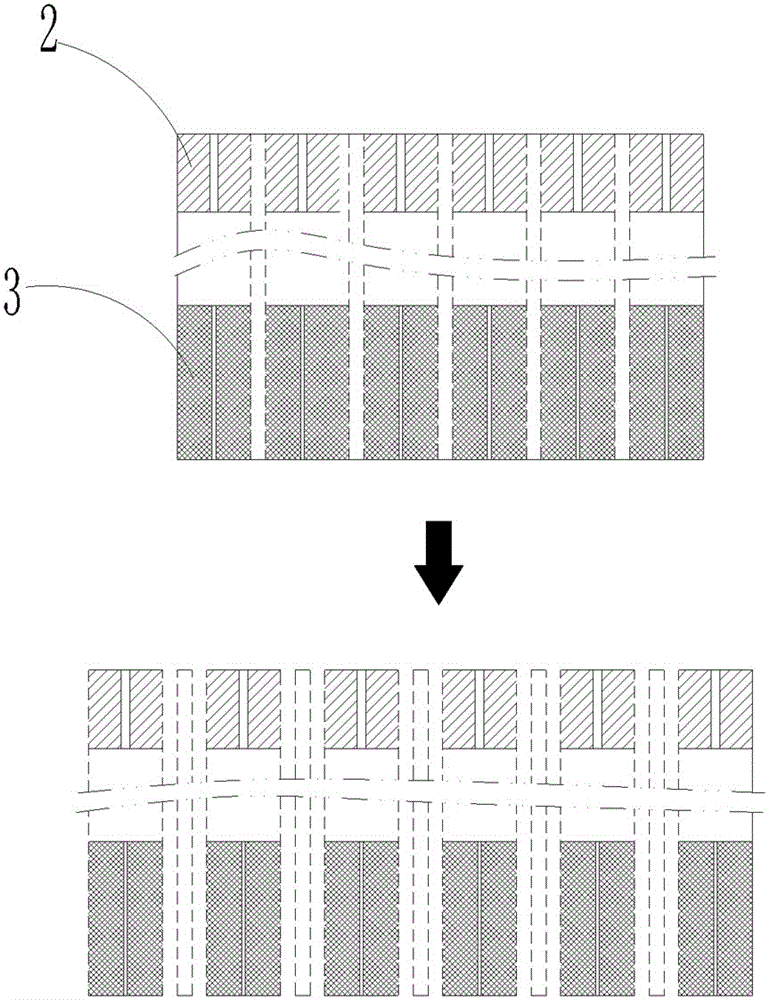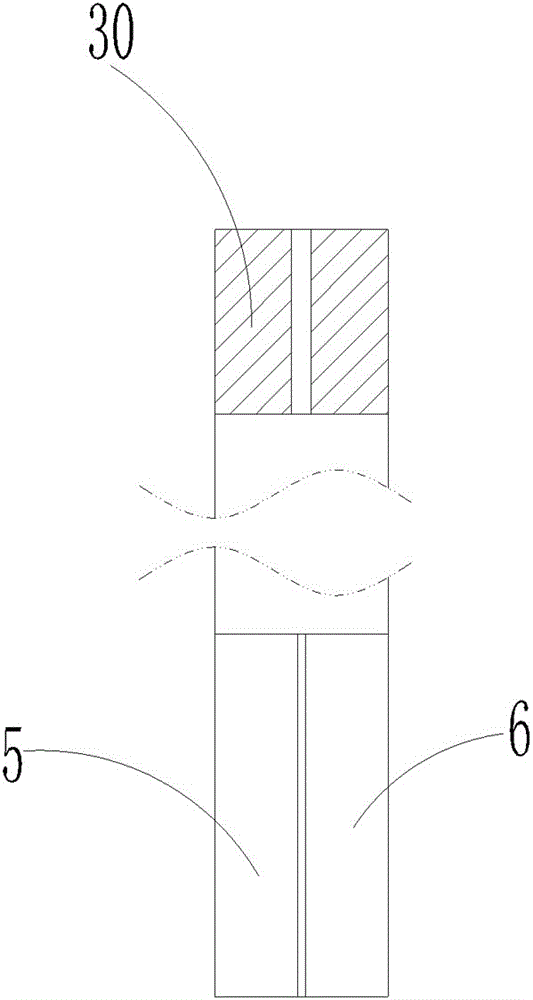Subcutaneous tissue involvement type glucose microsensor and preparation method thereof
A micro-sensor, subcutaneous tissue technology, used in sensors, medical science, diagnostic recording/measurement, etc., can solve the problems of large sensor size, sensor can not work normally, strong pain, etc.
- Summary
- Abstract
- Description
- Claims
- Application Information
AI Technical Summary
Problems solved by technology
Method used
Image
Examples
Embodiment 1
[0099] Embodiment 1: as figure 1 , figure 2 , image 3 , Figure 4 , Figure 5 , Figure 6 , Figure 7 , Figure 8 , Figure 9 , Figure 10 , Figure 11 , Figure 12 , Figure 13 and Figure 14 As shown, a subcutaneous tissue-intervening glucose microsensor includes a base 1, the base 1 is provided with an outwardly extending lead part 2, the end of the lead part 2 is connected to the sensor part 3, and the The sensor part 3 and the lead part 2 are respectively arranged on the insulating base layer 4;
[0100]The sensor part 3 includes a working electrode 5, a reference electrode 6, a counter electrode 7 and a blank electrode 8, the working electrode 5 is arranged on the left end of the front of the insulating base layer 4, and the reference electrode 6 is arranged on the insulating base layer 4 on the right side of the front side, the counter electrode 7 is set on the left side of the front side of the insulating base layer 4, the blank electrode 8 is set on the...
Embodiment 2
[0168] Embodiment 2: The preparation method of the subcutaneous tissue-intervention glucose microsensor is carried out according to the following steps:
[0169] (1) Selection of insulating base layer:
[0170] The insulating base layer adopts flexible polyimide insulating film or polyester film as the carrier, which has good physical and chemical properties;
[0171] Highly flexible, can be wired three-dimensionally, and can change shape according to space constraints; high and low temperature resistance, flame retardant; foldable without affecting signal transmission function, can prevent electrostatic interference; stable chemical change, high stability and reliability; beneficial to related The design of the product can reduce assembly hours and errors, and improve the service life of related products; good insulation performance, volume resistivity reaches 1015Ω.cm; excellent adhesion to common substrates, metals and dielectric materials; the thickness of the layer Contr...
Embodiment 3
[0217] Embodiment 3: The preparation method of subcutaneous tissue-interventional glucose microsensor is carried out according to the following steps:
[0218] (1) Selection of insulating base layer:
[0219] The insulating base layer adopts flexible polyimide insulating film or polyester film as the carrier, which has good physical and chemical properties;
[0220] Highly flexible, can be wired three-dimensionally, and can change shape according to space constraints; high and low temperature resistance, flame retardant; foldable without affecting signal transmission function, can prevent electrostatic interference; stable chemical change, high stability and reliability; beneficial to related The design of the product can reduce assembly hours and errors, and improve the service life of related products; good insulation performance, volume resistivity reaches 1015Ω.cm; excellent adhesion to common substrates, metals and dielectric materials; the thickness of the layer Control...
PUM
 Login to View More
Login to View More Abstract
Description
Claims
Application Information
 Login to View More
Login to View More - R&D
- Intellectual Property
- Life Sciences
- Materials
- Tech Scout
- Unparalleled Data Quality
- Higher Quality Content
- 60% Fewer Hallucinations
Browse by: Latest US Patents, China's latest patents, Technical Efficacy Thesaurus, Application Domain, Technology Topic, Popular Technical Reports.
© 2025 PatSnap. All rights reserved.Legal|Privacy policy|Modern Slavery Act Transparency Statement|Sitemap|About US| Contact US: help@patsnap.com



